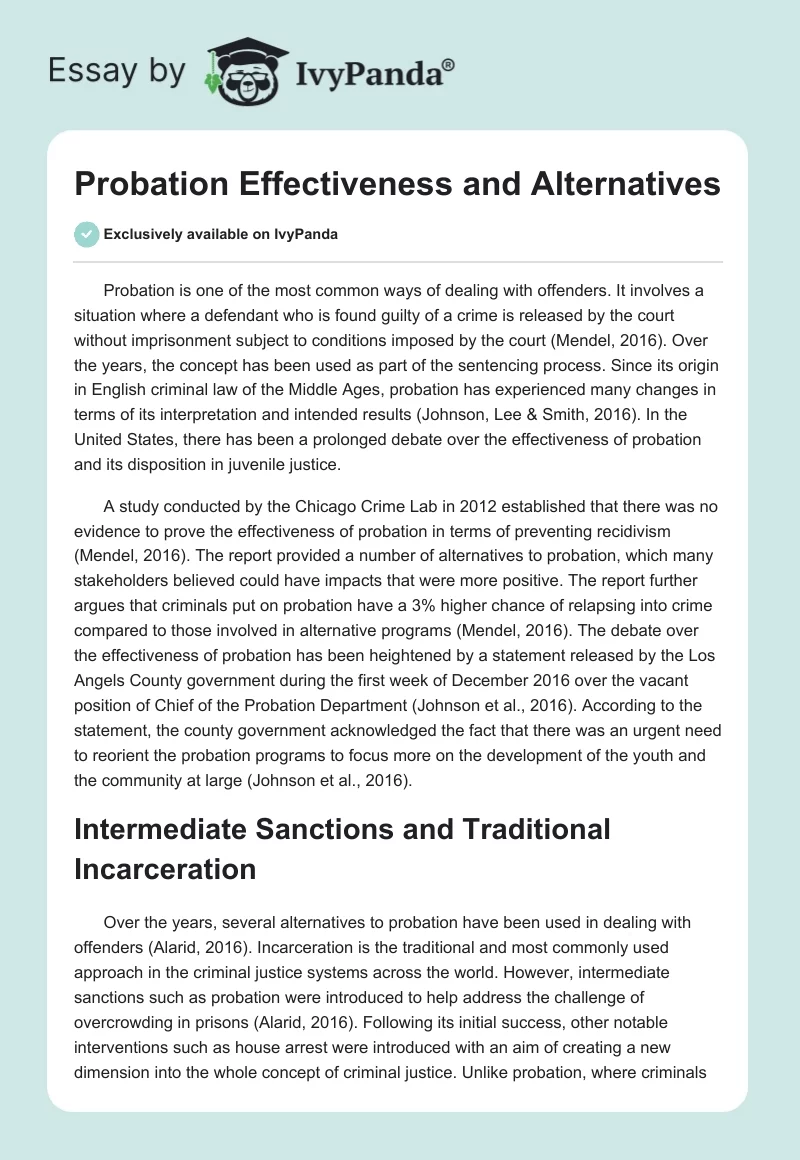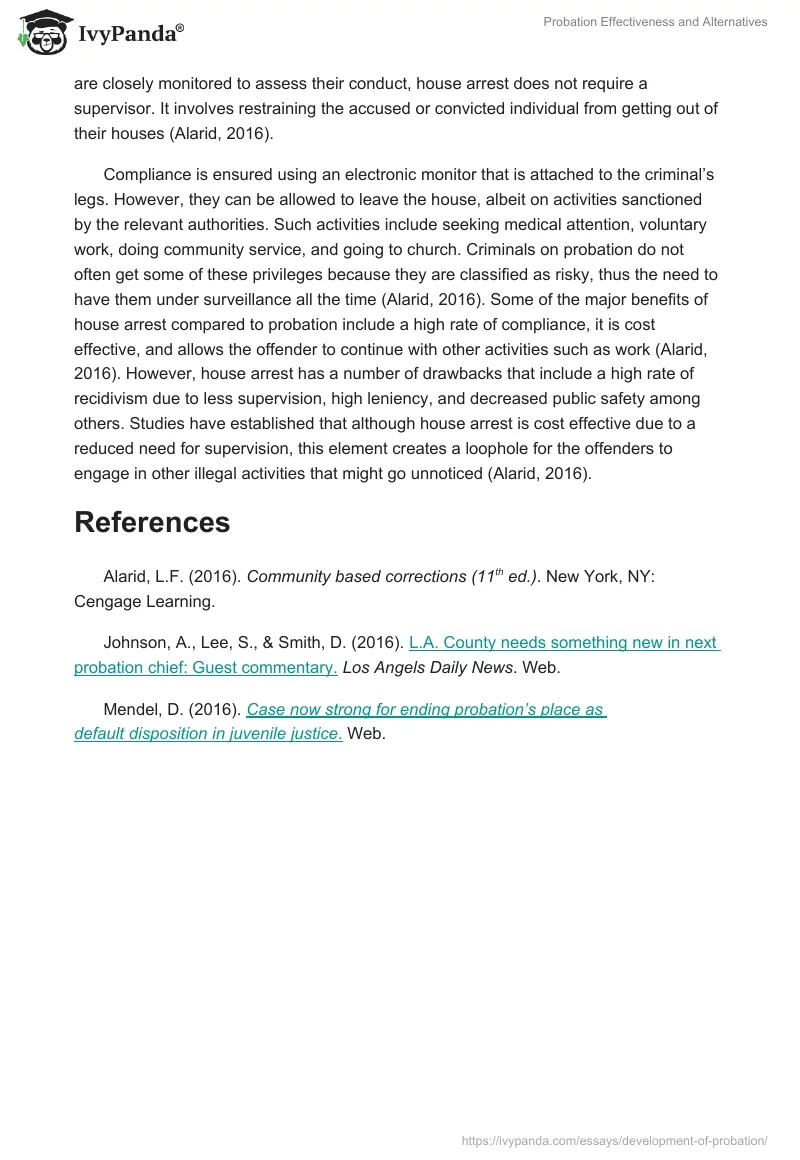Probation is one of the most common ways of dealing with offenders. It involves a situation where a defendant who is found guilty of a crime is released by the court without imprisonment subject to conditions imposed by the court (Mendel, 2016). Over the years, the concept has been used as part of the sentencing process. Since its origin in English criminal law of the Middle Ages, probation has experienced many changes in terms of its interpretation and intended results (Johnson, Lee & Smith, 2016). In the United States, there has been a prolonged debate over the effectiveness of probation and its disposition in juvenile justice.
A study conducted by the Chicago Crime Lab in 2012 established that there was no evidence to prove the effectiveness of probation in terms of preventing recidivism (Mendel, 2016). The report provided a number of alternatives to probation, which many stakeholders believed could have impacts that were more positive. The report further argues that criminals put on probation have a 3% higher chance of relapsing into crime compared to those involved in alternative programs (Mendel, 2016). The debate over the effectiveness of probation has been heightened by a statement released by the Los Angels County government during the first week of December 2016 over the vacant position of Chief of the Probation Department (Johnson et al., 2016). According to the statement, the county government acknowledged the fact that there was an urgent need to reorient the probation programs to focus more on the development of the youth and the community at large (Johnson et al., 2016).
Intermediate Sanctions and Traditional Incarceration
Over the years, several alternatives to probation have been used in dealing with offenders (Alarid, 2016). Incarceration is the traditional and most commonly used approach in the criminal justice systems across the world. However, intermediate sanctions such as probation were introduced to help address the challenge of overcrowding in prisons (Alarid, 2016). Following its initial success, other notable interventions such as house arrest were introduced with an aim of creating a new dimension into the whole concept of criminal justice. Unlike probation, where criminals are closely monitored to assess their conduct, house arrest does not require a supervisor. It involves restraining the accused or convicted individual from getting out of their houses (Alarid, 2016).
Compliance is ensured using an electronic monitor that is attached to the criminal’s legs. However, they can be allowed to leave the house, albeit on activities sanctioned by the relevant authorities. Such activities include seeking medical attention, voluntary work, doing community service, and going to church. Criminals on probation do not often get some of these privileges because they are classified as risky, thus the need to have them under surveillance all the time (Alarid, 2016). Some of the major benefits of house arrest compared to probation include a high rate of compliance, it is cost effective, and allows the offender to continue with other activities such as work (Alarid, 2016). However, house arrest has a number of drawbacks that include a high rate of recidivism due to less supervision, high leniency, and decreased public safety among others. Studies have established that although house arrest is cost effective due to a reduced need for supervision, this element creates a loophole for the offenders to engage in other illegal activities that might go unnoticed (Alarid, 2016).
References
Alarid, L.F. (2016). Community based corrections (11th ed.). New York, NY: Cengage Learning.
Johnson, A., Lee, S., & Smith, D. (2016). L.A. County needs something new in next probation chief: Guest commentary.Los Angels Daily News. Web.
Mendel, D. (2016). Case now strong for ending probation’s place as default disposition in juvenile justice. Web.


